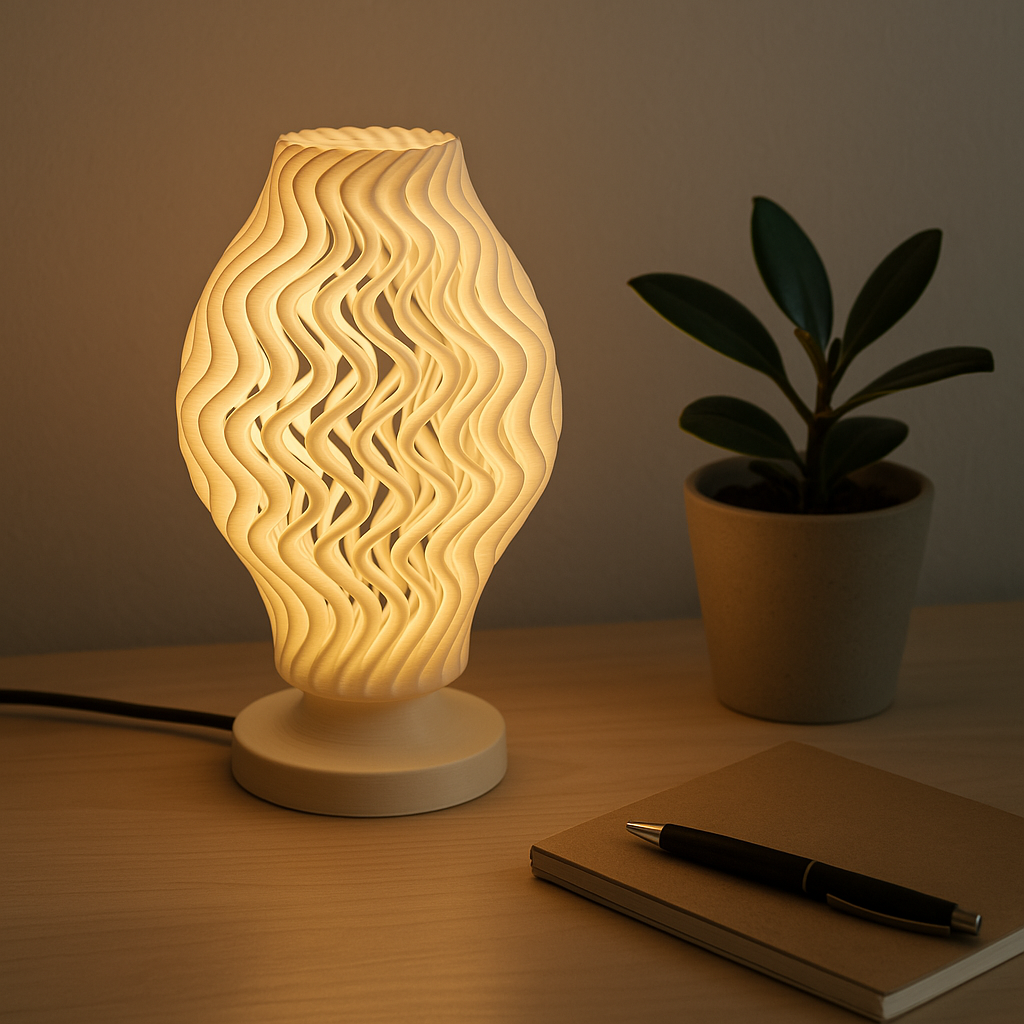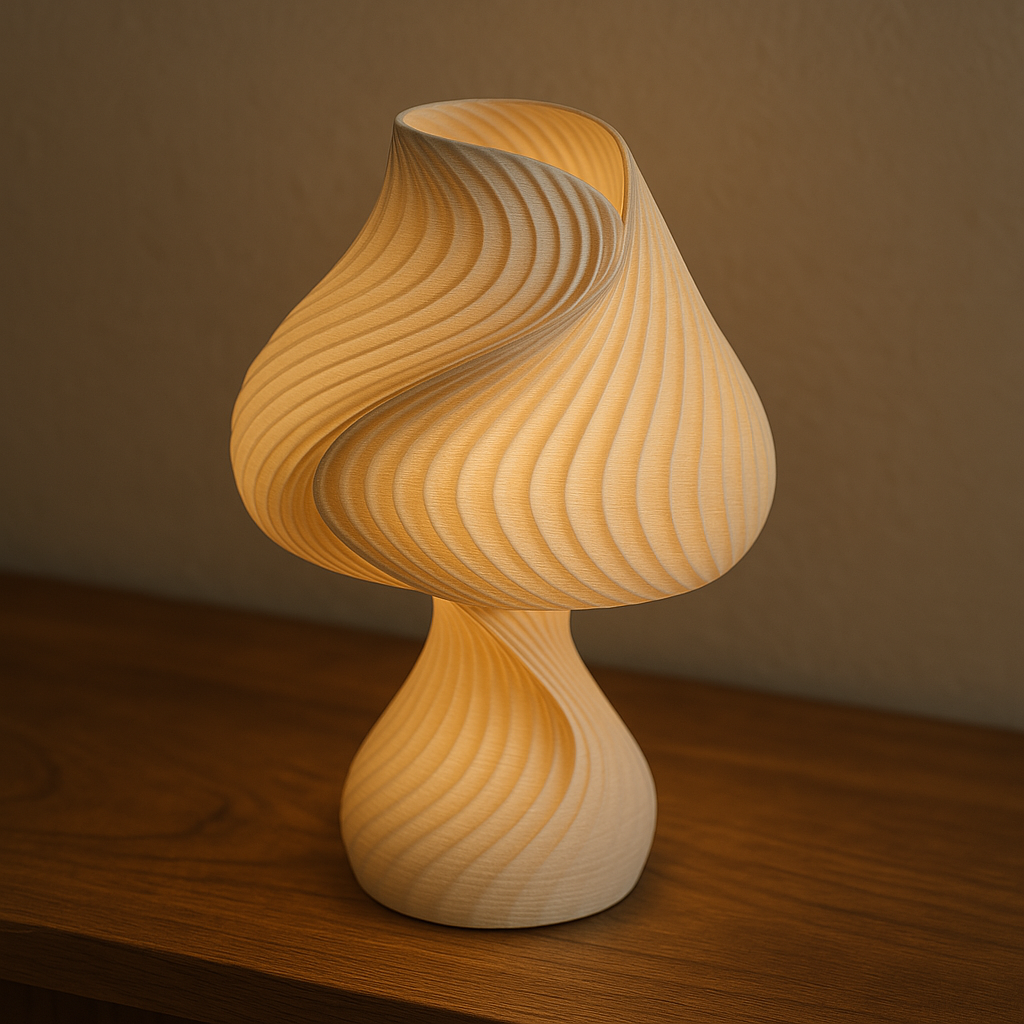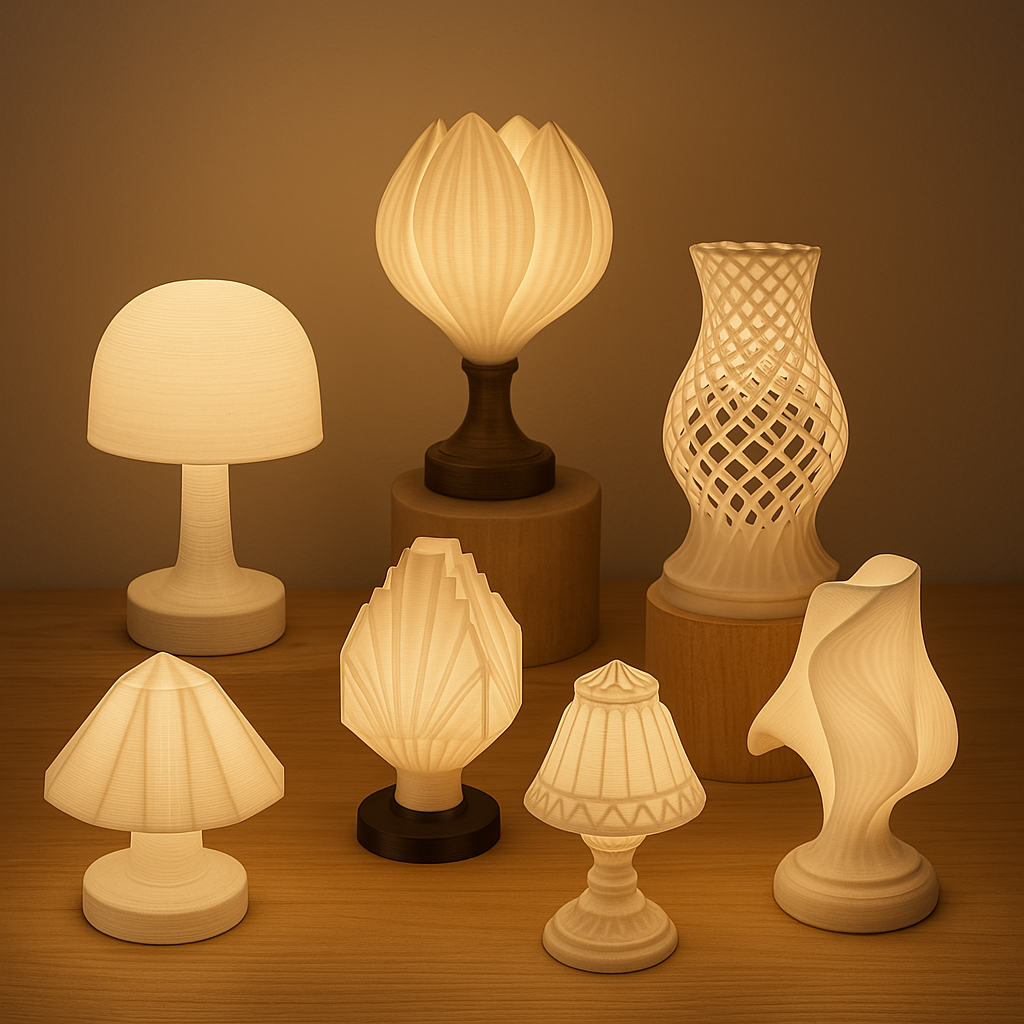Revolutionizing Interior Design: How 3D Printed Lighting Transforms Spaces Compared to Traditional Lamps
In the ever-evolving world of interior design and home decor, 3D printed lighting is making a significant impact by offering unparalleled customization, sustainability, and aesthetic innovation. Unlike traditional lamps and lighting fixtures that often follow mass-production methods with limited variety, 3D printing technology enables the creation of bespoke designs that can transform any space. Whether you’re looking for a sculptural centerpiece, intricate pendant lighting, or futuristic sconces, 3D printed lights deliver a perfect blend of functionality and artistry.
In this blog post, we’ll explore how 3D printed lighting stands out compared to traditional lighting, focusing on design freedom, material sustainability, customization, cost-efficiency, and energy efficiency.
🎨 1. Design Freedom and Parametric Possibilities
3D printed lighting breaks away from the limitations of traditional manufacturing processes, where designs are often restricted by molds and standardized production methods. With 3D printing, designers have the freedom to experiment with intricate geometries, parametric patterns, and organic shapes that would be impossible to produce using conventional techniques.
✅ Parametric Designs for Unique Aesthetics:
3D printed lamps allow for generative design and parametric modeling, meaning every lamp can be fine-tuned to reflect complex shapes inspired by nature, such as leaf patterns, coral structures, and wave-like forms. This capability makes 3D printed lighting a perfect choice for modern homes, commercial spaces, and luxury interiors seeking unique focal points.
✅ Complex Geometry with High Precision:
Unlike traditional lamps that are typically composed of separate parts assembled together, 3D printed lamps can be created as a single seamless piece. This results in sleek, cohesive designs that offer both aesthetic appeal and structural integrity.
🌱 2. Sustainability and Eco-Friendly Manufacturing
Sustainability is a growing concern in today’s design and manufacturing industries. 3D printed lighting offers a solution by drastically reducing waste and utilizing eco-friendly, recyclable materials that align with environmentally conscious design.
✅ Use of Recycled and Biodegradable Materials:
Many 3D printed lamps are made from materials such as recycled PETG, PLA, or bio-based resins, minimizing environmental impact. Traditional lamps, by contrast, often use materials that require energy-intensive production processes and generate excess waste.
✅ On-Demand Production to Reduce Waste:
Traditional manufacturing often involves mass production, resulting in surplus stock and wasted resources. With 3D printing, on-demand production means only what is needed is produced, preventing excess inventory and reducing carbon emissions.
✅ Local Manufacturing for Reduced Carbon Footprint:
By enabling localized manufacturing, 3D printing reduces the need for long-distance shipping and transportation, further lowering the carbon footprint compared to traditional lighting that is often manufactured overseas.
🎯 3. Customization and Personalization
When it comes to custom lighting, 3D printing offers unmatched flexibility. Whether it’s adjusting the size, pattern, or color, custom 3D printed lamps empower consumers to create lighting that reflects their personal taste and complements their unique space.
✅ Infinite Customization Options:
With 3D printed lighting, customers can tailor the design to suit their preferences, ensuring that no two pieces are alike. This level of personalization is rarely achievable with traditional lamps, which are mass-produced and offer limited style variations.
✅ Customizable Lighting for Commercial and Residential Spaces:
For high-end retail stores, hotels, and luxury residences, custom 3D printed lighting can provide a distinctive look that resonates with the brand’s identity and interior aesthetic. Personalized lighting solutions can transform a space while offering functionality that complements the overall design.
✅ Adaptive Designs for Unique Spaces:
3D printing allows for scalable designs that can be adapted to fit any space – from large-scale pendant lights to compact wall sconces. Traditional lighting, by comparison, often lacks the flexibility to be resized or adapted without extensive modification.
💡 4. Cost-Efficiency and Reduced Production Time
3D printed lighting also excels in terms of cost-efficiency and time management, making it a competitive alternative to traditional lighting.
✅ Reduced Production Time:
Traditional manufacturing processes often require multiple stages, from mold creation to assembly, which can extend lead times. 3D printing simplifies this process by enabling the production of complex designs in a single pass, reducing both time and labor costs.
✅ Lower Prototyping and Iteration Costs:
For designers and architects experimenting with new ideas, 3D printing offers an affordable and rapid prototyping solution. Traditional lamps often require costly mold adjustments, making the iteration process slow and expensive.
✅ No Need for Bulk Inventory:
With 3D printing, there’s no need to maintain large inventories. Production can be scaled up or down depending on demand, minimizing storage costs and reducing waste.
⚡ 5. Energy Efficiency and Smart Lighting Integration
Energy efficiency is an essential consideration for modern lighting solutions. 3D printed lights often integrate LED technology, which consumes significantly less energy than traditional incandescent bulbs.
✅ LED Compatibility for Long Lifespan:
3D printed lamps are frequently designed with LED compatibility, offering long-lasting and energy-efficient illumination. Traditional lamps, especially those using incandescent bulbs, consume more energy and have a shorter lifespan.
✅ Smart Lighting Integration:
Many 3D printed lighting solutions can easily integrate with smart home systems, enabling users to control brightness, color temperature, and scheduling through apps or voice assistants. This level of functionality is less common in traditional lighting systems.
🏆 Why Choose 3D Printed Lighting for Your Space?
If you’re seeking lighting that is as sustainable, innovative, and customizable as your vision for your home or business, 3D printed lighting is the ideal choice. Whether you’re designing a contemporary living room, upgrading your office space, or transforming a commercial environment, 3D printed lamps offer unmatched flexibility and creativity.
Key Benefits of 3D Printed Lighting:
-
Unique, one-of-a-kind designs that elevate your space
-
Eco-friendly materials and reduced environmental impact
-
Rapid prototyping and production with minimal waste
-
Full customization to match your style and functional needs
-
Integration with energy-efficient and smart lighting systems
🔎 Ready to Explore 3D Printed Lighting?
If you’re ready to explore the world of parametric, 3D printed lighting that blends art, technology, and sustainability, we offer an extensive range of customizable designs that will illuminate your space like never before. Check out our collection of 3D printed lamps, sconces, and pendant lights – all crafted with precision and passion.
💡 Explore Our Collection of 3D Printed Lights Today!
Transform your space with innovative, sustainable, and custom-designed lighting solutions.



Leave a comment
This site is protected by hCaptcha and the hCaptcha Privacy Policy and Terms of Service apply.